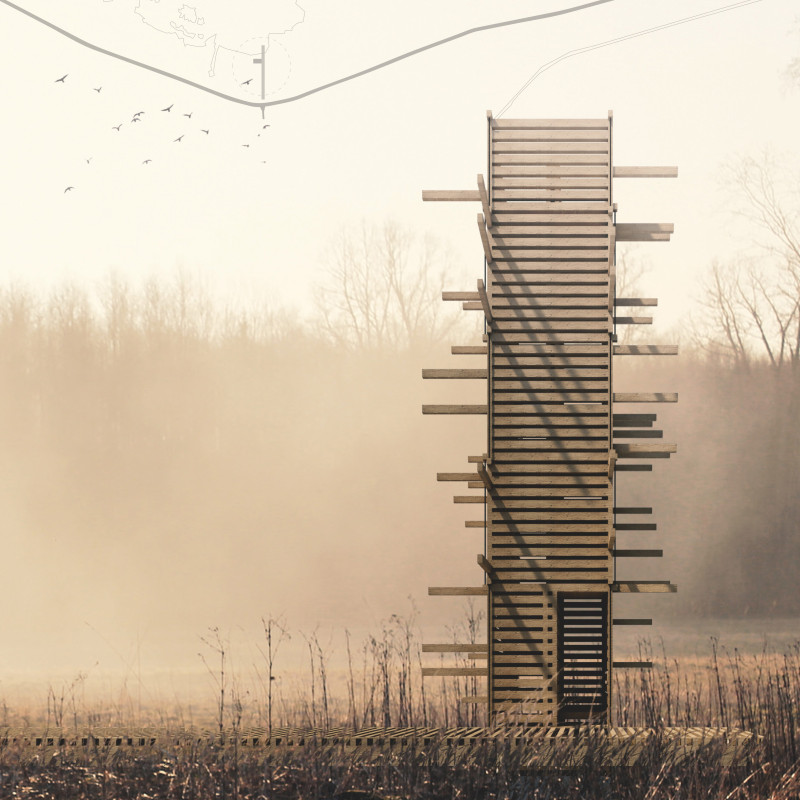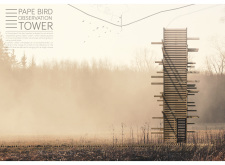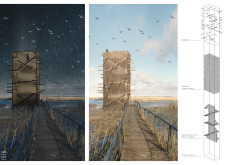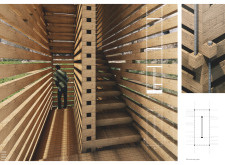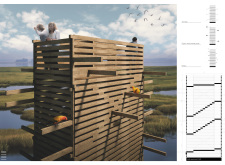5 key facts about this project
## Pape Bird Observation Tower Overview
The Pape Bird Observation Tower is an architectural intervention situated in a natural setting designated for avian observation. The design is informed by the principles of the traditional Japanese game “chūri,” which serves as a conceptual framework that informs both the structural assembly and aesthetic form of the tower. This integration aims to create a space that fosters a connection between visitors and the surrounding landscape.
### Structural Concept and User Engagement
The architectural strategy employs an innovative joint system that allows for timber assembly without reliance on glue or metal fasteners. This approach results in a design that visually and metaphorically represents a “thousand birds,” highlighting the unity in diversity. The tower features multiple viewing platforms at varying elevations, enabling users to experience the environment from different perspectives. The emphasis on transparency and openness encourages interaction between the observer and nature, while the layered timber stacking mimics natural growth patterns, enhancing the structural experience.
### Materiality and Sustainability
Timber is the primary material utilized for its aesthetic and sustainable qualities, aligned with ecological construction practices. Steel is selectively integrated at critical junctions to provide structural support. The use of locally-sourced timber not only minimizes environmental impact but also reinforces the connection of the tower to its surroundings. The design prioritizes a minimal footprint, ensuring that the structure occupies limited land area while maximizing vertical elevation, thereby reducing disruption to the natural landscape. Gaps and openings within the design facilitate airflow and views, contributing to both the practicality and visual appeal of the observation experience.


